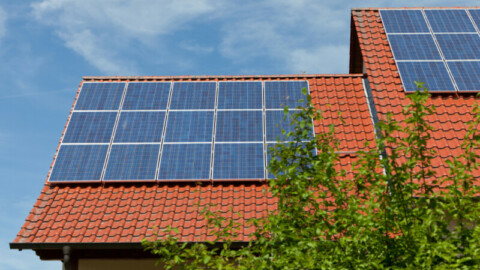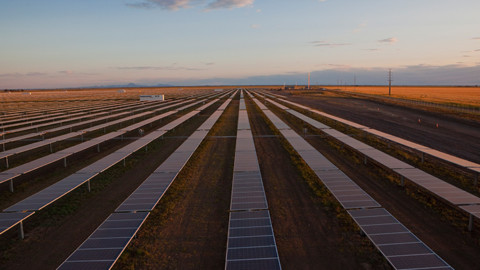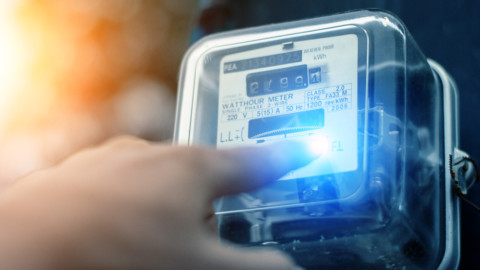by Charlie Richardson and Soon Wai Lim, Utilities Practice, Accenture Australia & New Zealand
Australia is currently lagging behind the rest of the world when it comes to electric vehicle adoption, and as a nation of car lovers with abundant sources of renewable energy, there really are no good reasons for this to be the case. Here, we look at why electric vehicle sales haven’t taken off in Australia; and the steps that need to be taken to turn Australia into the electric vehicle powerhouse it should be.
In its latest report, The Electric Vehicle Council identified a 200 per cent increase in electric vehicle (EV) sales, compared to a 7.8 per cent reduction in sales of petrol and diesel vehicles.
Market signs like these have pointed towards the rise of EVs for some time now, however as looming price parity tips the scales, Australia is underprepared.
It’s a surprising position for a country that has the natural resources to lead the development of the technology that is literally driving this evolution – lithium-ion (Li-ion) batteries.
This missed opportunity, coupled with a legacy of underinvestment in EV infrastructure, makes Australia an unattractive prospect for developers, placing us in the position of becoming a scrapyard market for obsolete petrol and diesel vehicles. This should provide timely motivation to salvage the future of Australia’s EV industry.
Fixing the right problems
Global markets outside of Australia have been far more progressive in pursuing the electric vehicle agenda, with Norway and the UK setting the standard for policy and Germany setting the benchmark for manufacturing.
Aggressive targets within these markets leave Australia too far behind at this point to become an industry leader.
As a secondary market, excess stock of petrol and diesel vehicles will find their way to Australia, at which point the value of these end-of-life assets will be no more than the scrap they’re worth.
Unfortunately, given our starting position, this is a near certainty. The immediate task is identifying and fixing the right problems.
Australia’s conversation around EVs inevitably focuses on the same circular topics – range anxiety (the fear that a vehicle will be unable to reach its destination), price parity with petrol and diesel vehicles and charge time.
While these are important practicalities, they miss the bigger picture. The launch of EVs in Australia is going to be led by fleet buyers, not individuals. This is largely due to the price differential for buying and delivering scale to the market.
It’s not just a simple case of exchanging one form of vehicle for another. There is an ecosystem that comes into play. We must urgently plan and execute the installation of chargers and accommodate the infrastructure needs of the vehicles themselves– these have both opportunities and challenges from a technology perspective.
There’s also the consideration of vehicle-to-grid energy transference. These bi-directional chargers need to comply with local Australian standards, while building operators need to identify and account for any electrical reticulation work required to tap into vehicle to grid capability.
The tech has already been proved in Spain, which makes back some time, but there’s a pressing need to get to grips with it promptly. In the long term, Australia would benefit hugely from manufacturing its own technology from our abundant resources, including Li-ion batteries, to avoid being at the mercy of global supply and disruptions.
This will prove future-crucial when Li-ion batteries overtake oil as the primary means of power. A significant oversight in Australia’s fledgling EV market, and to be fair, the global market as well, is software technology.
Software is inherently vulnerable to security threats and confidence in this technology is a huge factor in moving beyond the basic practical concerns dominating the current conversation.
The cyber security aspect of establishing our EV network therefore has to factor into our primary planning, especially at fleet level and the establishment of vehicle-to-grid energy transference.
Australia Post’s introduction of its electric trikes, otherwise known as eDVs (electric delivery vehicles) is a good example of the kind of essential fleet services that must protect themselves from disruption.
The route to Australia’s EV future
Australia’s first step of the journey is to establish a roadmap for how its EV future will take shape and start to trial and test essential elements like Lithium-ion manufacturing and energy transference.
In some ways, the delayed arrival of EVs to our market affords us an opportunity to learn from the mistakes of markets more advanced than ours. From a security perspective, the way forward should be familiar, as it follows the same journey as rolling out any new software – starting with extensive penetration testing.
Manufacturers will stand by the security of their tech, but without this level of scrutiny, there is no way to ensure the security of the entire network as an ecosystem.
There’s an urgent need to dive into the detail of the Australian market and determine what is needed at a granular level to pair the new tech with our existing infrastructure. If not, we can only expect to be crippled by perpetual delays and a frustrating sense of delivering the impossible.
This needs to go hand-in-hand with policy, standards and guidelines, even if they’re borrowed from the more advanced European markets that have done the heavy lifting already. In terms of industry standards, industry must take the lead. It’s too easy to say that the Federal Government needs to pick up the mantle.
Waiting any longer to take action will be detrimental. In the same way that innovation came to the fore during the pandemic and people took charge of finding their own solutions; what’s needed now is a consortium of the tech and design, retail, utilities and automotive industries to establish grassroots standards that suit the nuances of the Australian market, informed more widely by those established in Europe.
Salvaging our EV future
It’s time for Australia to move beyond rudimental considerations like range anxiety. The global industry has evolved past them and the technology is proven and mature. The best the Australian market can hope for as things stand is to become the global scrapyard for obsolete petrol and diesel vehicles.
It’s a stark reality, but fixable, and one that should spark imagination and determination to catch up with major international markets and global cities pressing forward with an electrified future for infrastructure and transport.
It’s now up to Australia’s industries to take charge of the situation, rather than waiting on government steer, and evolve the focus towards infrastructure planning and embedded cyber security that safeguards the EV ecosystem.
Our slow start provides an opportunity to embrace the progress of other markets and make back lost time, but we can’t wait any longer – the journey starts now.


















